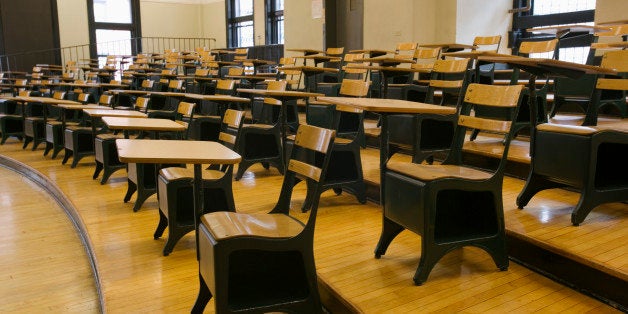
Free speech. College affordability. The value of a degree. Student athletes behaving badly. The seemingly dismal track record of Massive Open Online Courses (MOOCs). Administrative mishandling allegations of sexual assault.
It was an up and down year for higher education, as each of these matters took a turn atop the 24-hour news cycle. While I am not particularly nostalgic, I'd like to review some of the highlights -- and lowlights -- of 2014:
Let's Start on the Plus Side:
Who Can Learn?
Earlier this month President Barack Obama announced a $10 million plan to help students complete college, an initiative which he said will prioritize grants for evidence-based projects and sponsor research on improving graduation rates. The President also announced a $30 million expansion of an AmeriCorps program to help low-income students afford college tuition.
This is a positive step toward making college affordable to all--not just the affluent. It came just as the College Board published a report indicating that average tuition and fees increased by 2.9 percent over the last two school years. Though that jump is lower than in the past five, 10 or 30 years, colleges still have a long way to go before everyone has access to higher ed. This development is promising, and I look forward to implementation and seeing practical results.
The Time for MOOCs is...Not Yet
Now that much of the media hyperbole has died down, it's time to see if MOOCs actually work. An exhaustive study by Teachers College at Columbia University published in May found that MOOCs' intended impact on educational outcomes have not been completely realized, a conclusion that comes as no surprise to most college administrators. A separate report found that, at best, fewer than 20 percent of those who said they intended to complete a MOOC actually did so. Although it's clear that some hybrid form of online and in-class learning is here to stay, the best place to get a college education, for the time being, is still in the classroom. And that's a good thing.
Education for its Own Sake...and for the Real World
There was much debate this year about the value of a liberal arts degree for students entering the workforce. The large majority of colleges don't require core subjects--including American history, economics or foreign languages. This is particularly concerning as employers now say that recent hires don't have the critical-thinking skills they expect of college graduates. Weeks-long certificate programs have increased in popularity because some potential students no longer see the advantages of a much-more-expensive and time-consuming college degree.
Students need both a good liberal arts education and the foundation to succeed in the workplace. As a result of these debates, an important and long overdue conversation has emerged. Universities need to consider integrating a traditional liberal arts education with critical thinking, intellectual socialization and group dynamic achievement to enable students to become successful professionals.
On the Negative Side:
Muffled Commencement Speakers
One of the more distressing trends in higher education this year was the decision of some major colleges to disinvite controversial commencement speakers due to student or faculty protests. Ironically, this nearly occurred at the University of California Berkeley, where the Free Speech movement began in the 1960s. Shying away from controversy chills the free flow of ideas, a basic tenet of higher education and the academic dialogue. Schools should follow an open process of selecting a commencement speaker, allow input for students and faculty, make a decision and then stick to it. We must welcome ideas of all types, even if we disagree.
Trouble Off the Field
From shoplifting to domestic violence, 2014 saw glaring examples of bad behavior by college athletes who were rarely held accountable for their misdeeds. I have suggested that schools adopt a zero-tolerance policy for inappropriate behavior; apply discipline equally, be it for a star or a player glued to the bench; offer counseling; and that the punishment fit the crime. At long last, there has been some national discussion regarding the responsibility of colleges to educate student athletes on proper conduct, but actions speak louder than words and by that measure it has been virtually silent.
Campus Safety
Finally, the end of the year also brought troubling reports of sexual assaults on college campuses allegedly downplayed or covered up by university officials, sparking serious discussion and acknowledgment of the problem. Last month, Rolling Stone published a shocking article claiming that seven members of a University of Virginia fraternity gang-raped a female student. After the ensuing uproar, there were reports questioning the accuracy of the story.
The merits of a discussion on the journalistic process notwithstanding, it would be a grave mistake on the part of college administrators to allow such questions to minimize the story's overall message: Any allegation of sexual assault must be taken seriously. Shame on those trying to sweep this issue under the rug simply because Rolling Stone may have gotten some details wrong. We also need to reconsider whether college adjudication procedures are the best way to handle alleged campus assaults. It may be that law enforcement authorities or specialized independent multi-institutional panels may better protect both victims of assault and alleged attackers.
Share your impressions of 2014 in Higher Ed. What did you think?
